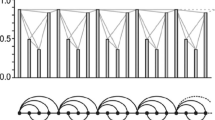Abstract
In the medical community, automatic epileptic seizure detection through electroencephalogram (EEG) signals is still a very challenging issue for medical professionals and also for the researchers. When measuring an EEG, huge amount of data are obtained with different categories. Therefore, EEG recording can be characterized as big data due to its high volume. Traditional methods are facing challenges to handle such Big Data as it exhibits non-stationarity, chaotic, voluminous, and volatile in nature. Motivated by this, we introduce a new idea for epilepsy detection using complex network statistical property by measuring different strengths of the edges in the natural visibility graph theory. We conducted 10-fold cross validation for evaluating the performance of our proposed methodology with support vector machine (SVM) and Discriminant Analysis (DA) families of classifiers. This study aims to investigate the effect of segmentation and non-segmentation of EEG signals in the detection of epilepsy disorder.
Access this chapter
Tax calculation will be finalised at checkout
Purchases are for personal use only
Similar content being viewed by others
References
Siuly, S., Li, Y.: Designing a robust feature extraction method based on optimum allocation and principal component analysis for epileptic EEG signal classification. Comput. Methods Programs Biomed. 119, 29–42 (2015)
Supriya, S., Siuly, S., Zhang, Y.: Automatic epilepsy detection from EEG introducing a new edge weight method in the complex network. Electron. Lett. (2016)
Donner, R., Small, M., Donges, J., Marwan, N., Zou, Y., Xiang, R., Kurths, J.: Recurrence-based time series analysis by means of complex network methods. Int. J. Bifurcat. Chaos 21, 1019–1046 (2011)
Campanharo, A., Sirer, M., Malmgren, R., Ramos, F., Amaral, L.: Duality between Time Series and Networks. PLoS ONE 6, e23378 (2011)
van Stam, C., Straaten, E.: The organization of physiological brain networks. Clin. Neurophysiol. 123, 1067–1087 (2012)
Ahmadlou, M., Adeli, H., Adeli, A.: New diagnostic EEG markers of the Alzheimer’s disease using visibility graph. J. Neural Transm. 117, 1099–1109 (2010)
Tang, X., Xia, L., Liao, Y., Liu, W., Peng, Y., Gao, T., Zeng, Y.: New approach to epileptic diagnosis using visibility graph of high-frequency signal. Clin. EEG Neurosci. 44, 150–156 (2013)
Ni, Y., Wang, Y., Yu, T., Li, X.: Analysis of epileptic seizures with complex network. Comput. Math. Methods Med. 2014, 1–6 (2014)
Lacasa, L., Luque, B., Ballesteros, F., Luque, J., Nuno, J.: From time series to complex networks: The visibility graph. Proc. Nat. Acad. Sci. 105, 4972–4975 (2008)
Antoniou, I., Tsompa, E.: Statistical analysis of weighted networks. Discrete Dyn. Nat. Soci. 2008, 1–16 (2008)
Andrew, A.: An Introduction to Support Vector Machines and Other Kernel‐based Learning Methods (2001)
Mikat, S., Fitscht, G., Weston, J., Scholkopft, B., Muller, K.-R.: Fisher discriminant analysis with kernels. Neural Net. Signal Proc. IX, 41–48 (1999)
Andrzejak, R., Lehnertz, K., Mormann, F., Rieke, C., David, P., Elger, C.: Indications of nonlinear deterministic and finite-dimensional structures in time series of brain electrical activity: Dependence on recording region and brain state. Phys. Rev. E 64, 61907 (2001)
Siuly, L.: Y., Wen, P.: Clustering technique-based least square support vector machine for EEG signal classification. Comput. Methods Programs Biomed. 104, 358–372 (2011)
Nicolaou, N., Georgiou, J.: Detection of epileptic electroencephalogram based on Permutation Entropy and support vector machines. Expert Syst. Appl. 39, 202–209 (2012)
Zhu, G., Li, Y., Wen, P.: Epileptic seizure detection in EEGs signals using a fast weighted horizontal visibility algorithm. Comput. Methods Programs Biomed. 115, 64–75 (2014)
Author information
Authors and Affiliations
Corresponding author
Editor information
Editors and Affiliations
Rights and permissions
Copyright information
© 2016 Springer International Publishing AG
About this paper
Cite this paper
Supriya, Siuly, Wang, H., Zhuo, G., Zhang, Y. (2016). Analyzing EEG Signal Data for Detection of Epileptic Seizure: Introducing Weight on Visibility Graph with Complex Network Feature. In: Cheema, M., Zhang, W., Chang, L. (eds) Databases Theory and Applications. ADC 2016. Lecture Notes in Computer Science(), vol 9877. Springer, Cham. https://doi.org/10.1007/978-3-319-46922-5_5
Download citation
DOI: https://doi.org/10.1007/978-3-319-46922-5_5
Published:
Publisher Name: Springer, Cham
Print ISBN: 978-3-319-46921-8
Online ISBN: 978-3-319-46922-5
eBook Packages: Computer ScienceComputer Science (R0)




